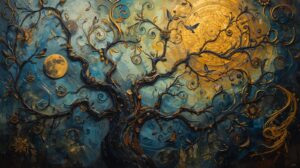Top Tips for Investing in Art
Investing in art is not just about acquiring beautiful pieces to decorate your walls; it’s about diversifying your portfolio and potentially realizing substantial financial gains. As a seasoned financial analyst, I have seen how the art market, though often perceived as niche, can serve as a compelling alternative investment. In this article, I will share key insights and tips to help you navigate the art investment landscape.
Art investment is the practice of buying works of art with the intention of generating a return on investment. Unlike traditional financial assets, art does not generate income but can appreciate significantly in value over time. It is crucial to understand that investing in art requires a blend of passion, patience, and strategic insight.
Is Art a Good Investment?
The question “is art a good investment?” often arises among potential investors. The answer depends largely on market trends and individual investment goals. Historically, blue-chip art (works by well-established artists) has shown resilience and steady appreciation, even amid economic downturns. Art investment can also provide a hedge against inflation, as its value often moves independently of stock and bond markets.
Key Tips for Investing in Art
Do Your Research
Before diving into art investment, immerse yourself in the art world. Study market trends, artist reputations, and historical price performances. Attend art fairs, galleries, and auctions to gain firsthand experience and insights. Understanding the nuances of the art market is vital for making informed investment decisions.
Diversify Your Art Portfolio
Just like with traditional investments, diversification is crucial in art investment. Consider acquiring works from different artists, styles, periods, and media. This approach not only reduces risk but also increases the potential for higher returns. Remember, the art market can be unpredictable, and a diversified portfolio can help mitigate potential losses.
Engage with Art Experts
Consulting with art advisors, curators, or gallery owners can provide valuable insights into the art market. These professionals can guide you in identifying promising artists and emerging trends. Their expertise can be invaluable in building a strategic art investment portfolio.
Consider Art Funds
For those who prefer a more hands-off approach, art investment funds offer a viable alternative. These funds pool resources from multiple investors to purchase high-value art pieces. Managed by experienced professionals, art funds provide access to a diversified art portfolio without the need for individual investment decisions.
Assess Authenticity and Provenance
Ensuring the authenticity and provenance of an art piece is critical. Provenance refers to the documented history of an artwork, confirming its authenticity and ownership. Investing in authenticated pieces protects you from potential legal issues and ensures the value of your investment.
Navigating the Art Market

Understanding Market Dynamics
The art market is influenced by a variety of factors, including economic conditions, cultural trends, and geopolitical events. Stay informed about these dynamics to anticipate market movements and adjust your investment strategy accordingly. The art market’s complexity requires continuous learning and adaptation.
Timing Your Investment
Timing plays a significant role in art investment. While the art market does not experience the same volatility as stocks, there are still optimal times to buy or sell art. Pay attention to auction results, market reports, and economic indicators to time your investments for maximum returns.
Long-term Commitment
Art investment is typically a long-term endeavor. Unlike stocks or bonds, art does not provide immediate liquidity. Be prepared to hold onto your investments for several years to realize potential gains. This long-term perspective aligns with the nature of art as a tangible asset that appreciates over time.
Conclusion
Investing in art can be a rewarding venture, both financially and aesthetically. By understanding the art market, conducting thorough research, and engaging with experts, you can build a strategic art investment portfolio. Remember, patience and a keen eye for quality are your greatest assets in the world of art investment.
In conclusion, art investment offers a unique opportunity to diversify your portfolio and explore an alternative asset class. Whether you are an institutional investor, a corporate finance professional, or a startup entrepreneur, understanding the dynamics of art investment can enhance your financial strategy and potentially deliver significant returns.
Art investment is more than just a financial decision; it is an exploration of culture, history, and human expression. Approach it with curiosity and strategic insight, and you may find both enjoyment and profit in the art world.

